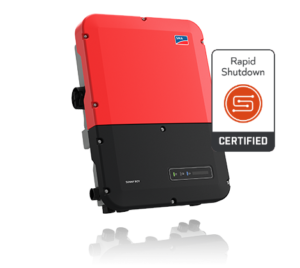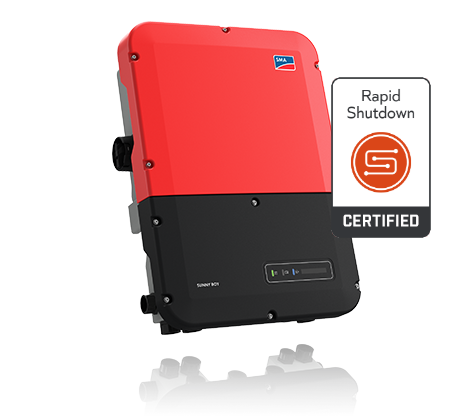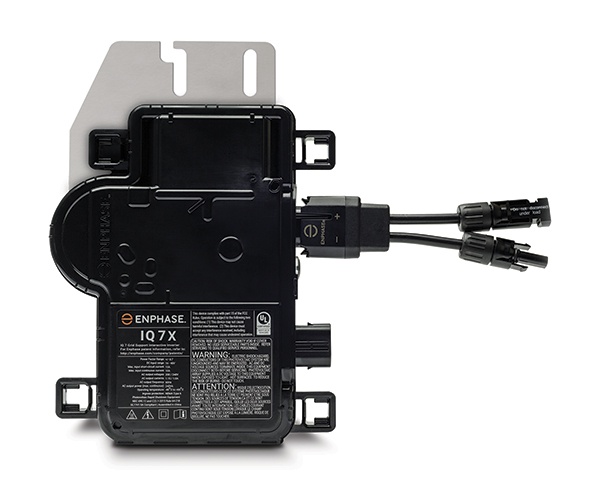
String Inverter or Microinverter? What’s best for me?
It seems in the solar industry there is an on-going debate between whether it is better to use a traditional string inverter or microinverters. So what is better for your situation? The short answer of course is, “it depends”. So let’s see if we can shed a little light on the subject. Actually, even better, let’s see if we can shed a little shade on the subject.
First, before we get too far, it’s important to understand exactly what the inverter’s function with a solar array. Solar panels produce electricity in direct current (DC). Your home uses alternating current (AC). The inverter is an electronic device that changes the DC current to AC current. Let’s look at the differences and the pros and cons of both inverters.
String Inverters
With a traditional string inverter, the solar panels are connected in strings. For an example, let’s say that your situation requires 30 solar panels to produce enough electricity to meet your needs. The exact configuration of the strings can vary depending on each situation, but for the sake of an easy example, let’s say we have 3 strings of 10 panels. The panels would be producing electricity in DC current, which would flow through the wiring to the inverter, which would in turn convert the electricity to AC current.

Now continuing with my bad pun, let’s shed some shade on the subject – or at least on the panels. It should be obvious that when there is shade on a solar panel, the production of electricity will be reduced. With the string inverter, however, the effect of shading is greater. At any given moment, if there is shade on one or more panels in a particular string, it will reduce the production output of each solar panel in the string to the level of the shaded panel(s). Think of it as a bottleneck in the flow of electricity. Therefore, there would be electricity production losses from the panels that would otherwise not be affected by shade. In our example above, if one panel had shade on it reducing it’s production by 20%, then the other 9 panels in the string would be reduced by 20%, even with no shading.
Microinverter
This is where the microinverter comes in. Unlike a string inverter where several panels are strung together, microinverters are small inverters that are attached to the back of each solar panel. Each panel has it’s own inverter, which converts the electricity from DC to AC current. Because microinverters are not set up in strings, shading on one panel will not affect the production of other panels. Properties where shading is an issue are therefore candidates for microinverters.

However, the analysis doesn’t stop here. In general, microinverters are overall more expensive than string inverters. So of course we need to look at whether the added electricity production justifies the cost. Shade in the early morning or late afternoon where the system isn’t producing as much electricity anyway doesn’t make as much of a case for microinverters as a situation where there is shade during peak production times of the solar array. Also keep in mind that when panels are equally shaded, the microinverters aren’t providing any extra production. The partial shading needs to be on the array for a long enough period of time to see a substantial benefit. If you have ever watched a shadow from a tree move across your roof as the sun is rising or setting, it tends to move pretty quickly.
While shade mitigation is the main advantage of microinverters, another situation where they offer a solution is when you have a roof that is cut up and the solar panels are facing several different directions. These situations would have similar issues in production losses even with no shading. To explain this a little better with our example where we have 3 strings of 10 panels. Let’s say one of the strings has 5 panels facing due south and the other 5 facing south west. (This is just for explanation purposes. It would be very poor array design to configure a string of panels in this manner.) At noon, the panels facing due south would be at their peak production. The panels facing south west however will not have reached their peak production yet because the sun isn’t directly overhead yet. Therefore they would not be producing as much electricity. This would in turn reduce the production of the other 5 panels in the string. In fact, this string would never produce at full production, which is worse than if the string were simply shaded part of the day. This is why strings are never set up with the solar panels facing different directions. And with properties where there isn’t enough room to have a complete string facing the same direction, microinverters become the perfect solution.
There are several other more minor factors as well, but the 2 examples listed here are by far the most important when it comes to decision making. It is important to understand these concepts and to have both the knowledge to design a system not just to produce the most electricity, but to do so cost-effectively. At United Sun Energy, we have both the knowledge and experience to design and install a system that will provide you with inexpensive, reliable electricity for years to come.